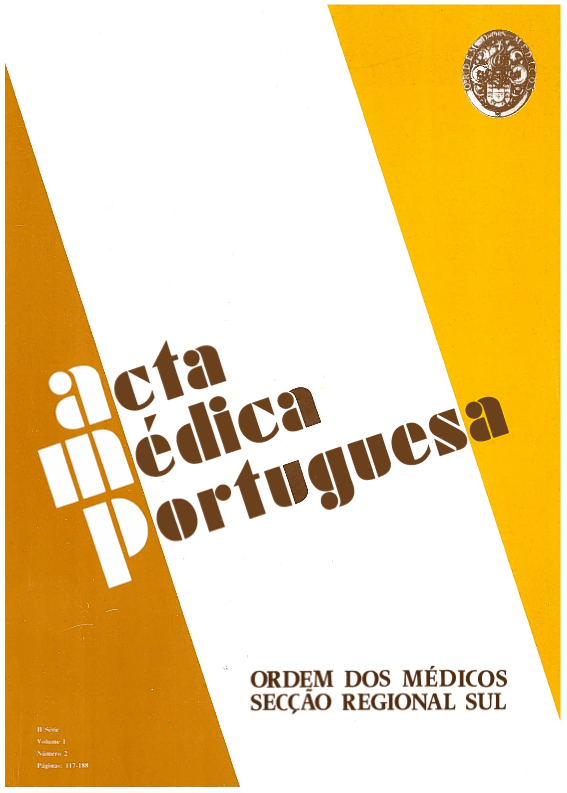Glucagonoma syndrome.
DOI:
https://doi.org/10.20344/amp.3557Abstract
Individualizado em 1973, o síndroma do glucagonoma caracteriza-se essencialmente por eritema necrolitico migrador, glucagonoma, hiperglucagonemia plasmática e hiperglicemia. O eritema necrolitico migrador, presente em dois terços dos casos, precede, em regra, a restante sintomatologia; predomina, de modo bilateral e simétrico, nas grandes pregras e áreas periorificiais, caracterizando-se sobretudo por lesões eritemato-escamosas e bolhosas superficiais, de contornos circinados e de evolucao centrifuga, por surtos irregulares. Histologicamente existe necrose malpighiana das camadas mais superficiais, com posterior descolamento bolhoso. A glucogonemia em jejum e superior a 500 pg/ml. O glucagonoma, constituído por células alfa, em regra maligno mas lentamente progressivo, localiza-se quase sempre na cauda do pâncreas. A acção patogénica do glucagon na sintomatologia cutânea e ainda discutida porque nem sempre há correlação entre a taxa da giucagonemia e a intensidade das lesões dermatogicas, existem
eritemas necroliticos migradores sem glucagonomas e, pelo contrário, glucagonomas sem sintomas cutâneos. A similitude clinica e histopatológica entre o eritema necrolítica migrador e o síndroma por hipozinquemia faz discutir as relações entre o glucagon e o zinco, ao qual o glucagon se liga facilmente in vitro.
Downloads
Downloads
How to Cite
Issue
Section
License
All the articles published in the AMP are open access and comply with the requirements of funding agencies or academic institutions. The AMP is governed by the terms of the Creative Commons ‘Attribution – Non-Commercial Use - (CC-BY-NC)’ license, regarding the use by third parties.
It is the author’s responsibility to obtain approval for the reproduction of figures, tables, etc. from other publications.
Upon acceptance of an article for publication, the authors will be asked to complete the ICMJE “Copyright Liability and Copyright Sharing Statement “(http://www.actamedicaportuguesa.com/info/AMP-NormasPublicacao.pdf) and the “Declaration of Potential Conflicts of Interest” (http:// www.icmje.org/conflicts-of-interest). An e-mail will be sent to the corresponding author to acknowledge receipt of the manuscript.
After publication, the authors are authorised to make their articles available in repositories of their institutions of origin, as long as they always mention where they were published and according to the Creative Commons license.









